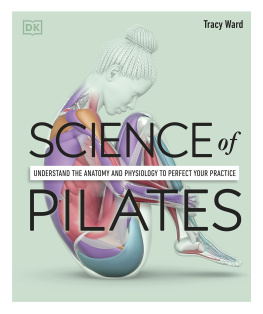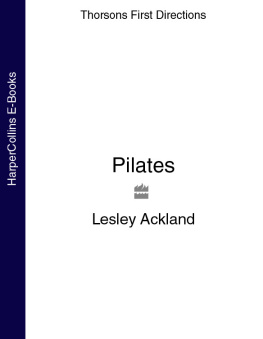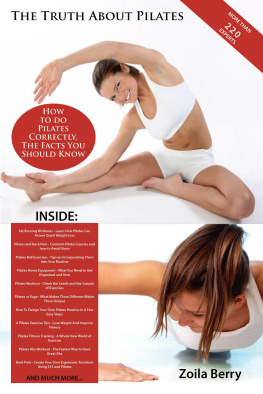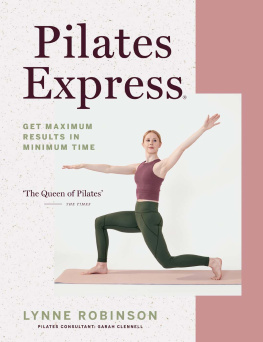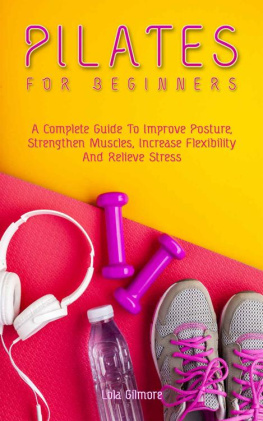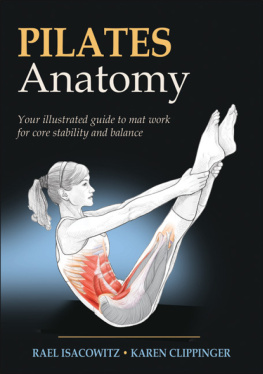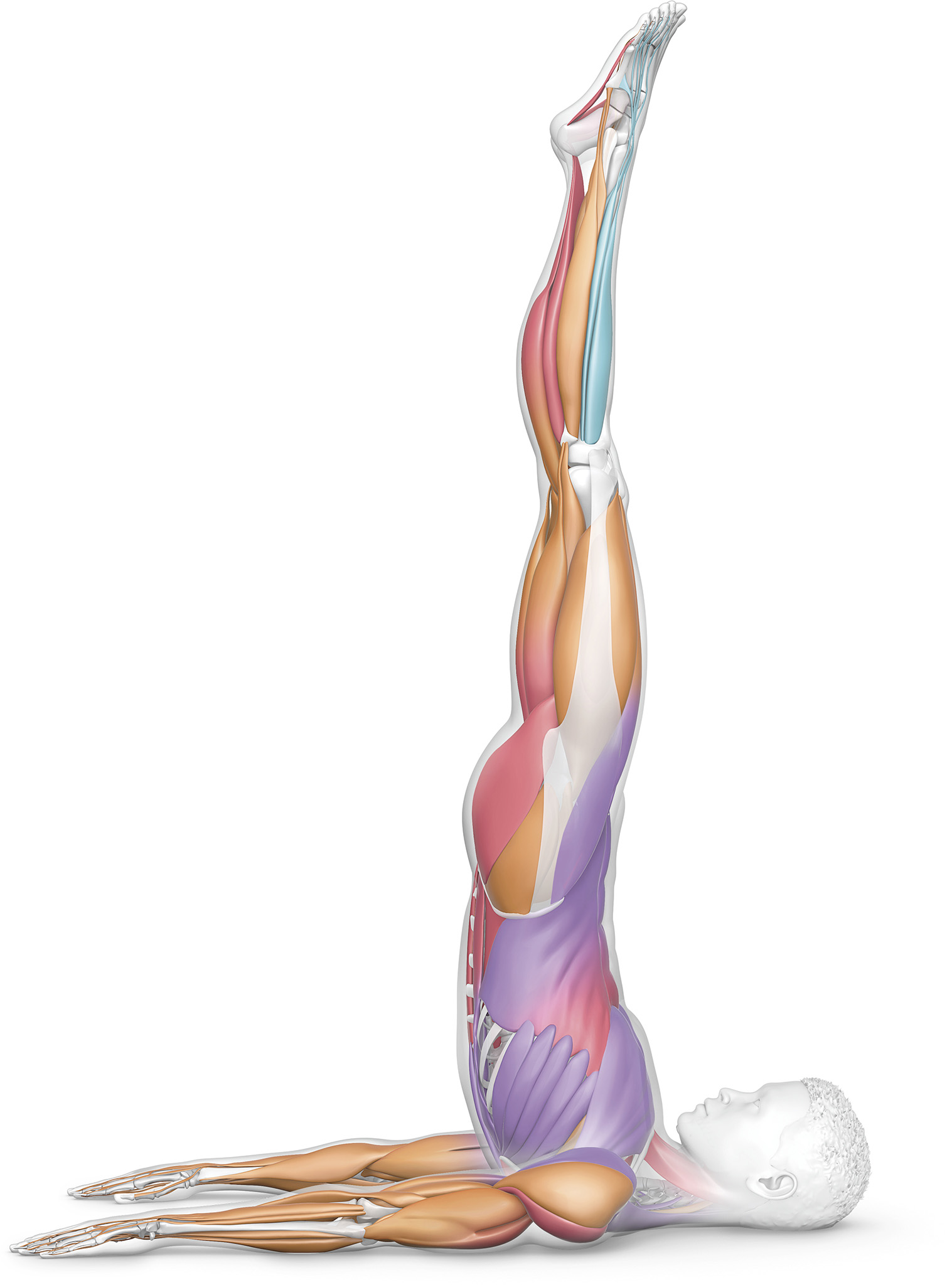CONTENTS
g
HOW TO USE THIS eBOOK
Preferred application settings
For the best reading experience, the following application settings are recommended:
- Orientation: Portrait
- Color theme: White background
- Scrolling view: [OFF]
- Text alignment: Auto-justification [OFF](if the eBook reader has this feature)
- Auto-hyphenation: [OFF](if the eBook reader has this feature)
- Font style: Publisher default setting [ON](if the eBook reader has this feature)
- In Settings, change the font sizeto a size you are most comfortable with.
- Double-tap images in the book to open images to full screen and to be able to zoom-in and see details clearly.
INTRODUCTION
Dating back to the early 20th century , Pilates is a fitness trend that has never slowed down and has become a globally renowned exercise method. Pilates was initially created as a physical practice, but it was always rooted in a holistic approach. From correcting posture, strengthening the core, reducing pain, and focusing the mind, the benefits of Pilates are endless and needed now more than ever.
Recent times have shown an enduring mindset shift that has reframed how we view exercise and how we honor what our bodies need. More people are seeking an exercise method that is as much about enjoyment and making a mindfulness connection as it is about physical health.
Pilates rewards you with strong, lean muscles and full-body mobility. It has the flexibility to vary its intensity and adapt to the fitness level and ability of the participant. Its popularity continues to grow as the diversity of the method offers inclusivity and empowerment and cumulatively has a positive impact across many of lifes challenges.
I first discovered Pilates during my undergraduate years when I was searching for an exercise class to complement my regular gym sessions. I didnt realize it at the time, but Pilates was exactly what my body needed. Muscle aches from sitting and studying for long hours and sporting injuries all resolved after I started attending classes. More recently, I found a whole new meaning to Pilates, as I feel I owe my two very positive pregnancies and straightforward births to my consistent Pilates practice. I know this may have merely been luckbirth is so unpredictablebut even the Pilates breathing and mindset alone completely empowered my labors.
I now practice Pilates regularly for my physical fitness, as well as for the mental clarity that the mind-body connection brings. I use it extensively in my clinical role as a physiotherapist and witness every day the benefits it brings to my patients, from the athlete and the postpartum mom, to those with acute back pain or hypermobility, and everything in between.
WHY THIS BOOK?
From every aspect of my workcourses I teach, clinic work, and my online platformsI hear from inquisitive people. This has led to me writing this bookthe ultimate serendipitous opportunity to combine my passion for Pilates, my scientific background, and my clinical experience. Science of Pilates is a comprehensive guide to help you start, develop, and progress your Pilates practice, to adapt it to suit every condition, and to understand all the reasons why you chose it. Packed full of useful tips and facts, it is the book I wish I had when I was learning, and I hope you enjoy transforming your practice. Whether you are new to Pilates, an established enthusiast, or a teacher yourself, this book offers detailed, step-by-step illustrations that guide you effortlessly through the Pilates method. Plus, its all supported by credible scientific references. It is an innovative amalgamation of the research and practical application and aims to empower your Pilates practice to a whole new level.
Pilates has literally changed my life for the better, and I hope it does for you too.
Tracy Ward BSc (Hons), MSc, MCSP Pilates Teacher, Educator, and Physiotherapist www.freshlycentered.com
Pilates is a full-body strength and mobility workout that can improve health , fitness, and mindset , and is inclusive for all.
HISTORY AND PRINCIPLES OF PILATES
The concept of Pilates was created by German-born Joseph Pilates during World War I. Pilates was originally a bodybuilder and gymnast, then while interned on the Isle of Man, he created his revolutionary approach to exercise as a way to train both the body and mind to their full potential. This unique approach was originally called Contrology, but later became known as Pilates.
WHERE PILATES CAME FROM
Joseph Pilates was born in 1883, and his list of childhood illnessesincluding asthma, rickets, and rheumatic feverfueled his determination to excel in health and fitness and to strengthen and heal his body. He trained in yoga, martial arts, meditation, gymnastics, self-defense, and skiing, and this led him to move to England in 1912 to work as a gymnast, boxer, and self-defense teacher.
As an enemy national during World War I, Joseph was interned in hospitals as an orderly. Appalled by the condition of the patients in their beds, he devised an exercise regimen that saw them recover faster. Joseph relocated back to Germany after the war where his exercise method became popular in the dance world. In 1926, he immigrated to the United States. He met his wife Clara, and together they opened The Pilates Studio in New York. Dancers from the New York Ballet practiced Pilates to treat their injuries. His reputation expanded, and studios opened across the country to share his unique method.
THEORY AND EVOLUTION OF THE METHOD
Joseph was visionary in his beliefs of self-discipline, self-care, and commitment to a healthy lifestyle, and his method was rooted in principles of routine, flexibility, and core strength. He believed that the development of whole-body physical fitness, combined with mental control, would relieve the body of illness; balance the mind, body, and spirit; and foster self-confidence. The holistic approach to Pilates was deeply embedded. The original Pilates regimen was first developed for the mat, but when working in hospitals, Joseph explored the use of springs in the beds to apply resistance and progressive overload to strengthen the body. As the demand grew for his method in New York, he later created pieces of studio equipment, including the Cadillac, Reformer, Wunda Chair, and Arc Barrel. Using these facilitated better movement, strength, and flexibility beyond the mat. Joseph died in 1967, but his legacy continues to expand, passed down through his students who later learned how to teach Pilates to others.
Contrology develops the body ... corrects postures , restores physical vitality , and invigorates the mind ...
Joseph Pilates
PRINCIPLES OF PILATES
Pilates exercises are based around strict breathing patternsbreathing is the original and fundamental principle of the discipline. The remaining five principles account for the unique Pilates technique, and their integration with each other provides the mind and body connection, leading to the true effectiveness of a Pilates program. You can also apply these principles in your everyday life off the mat.

